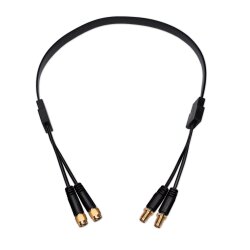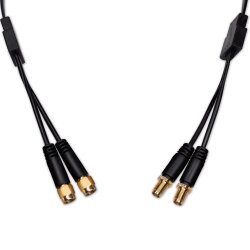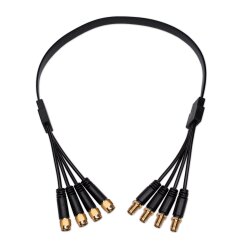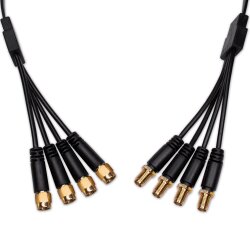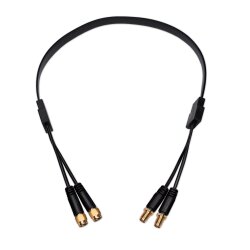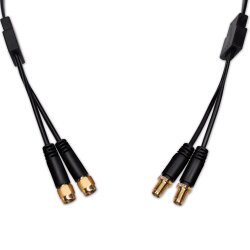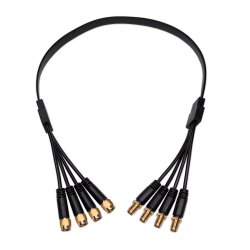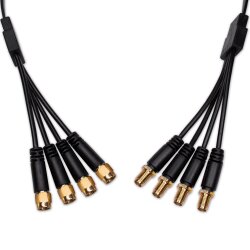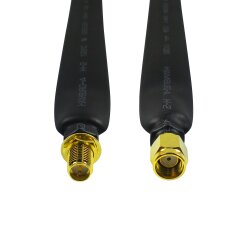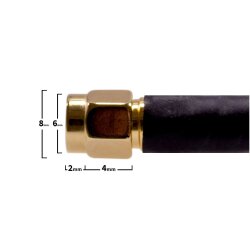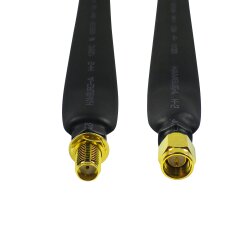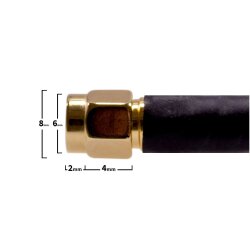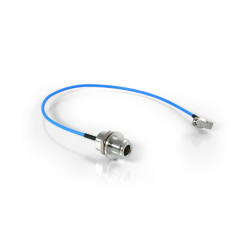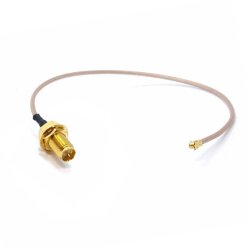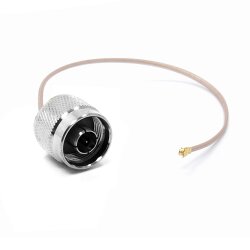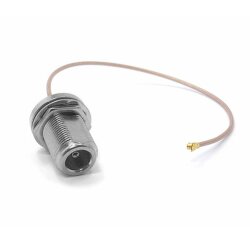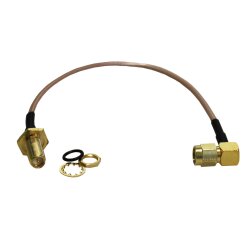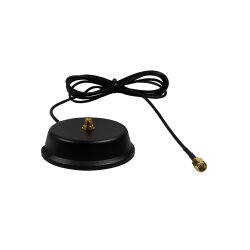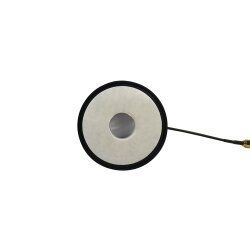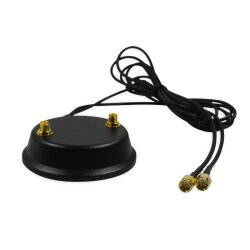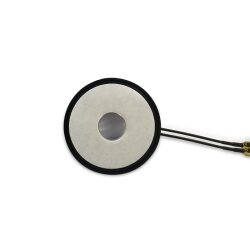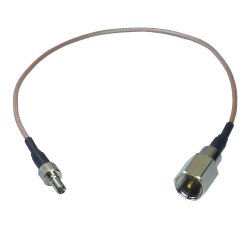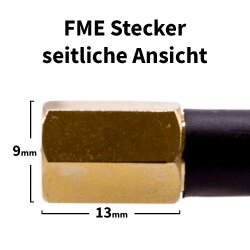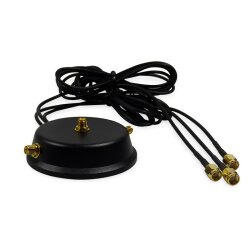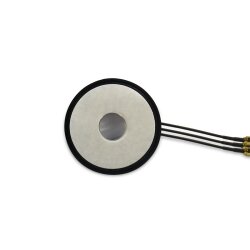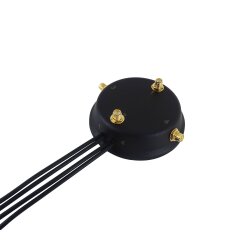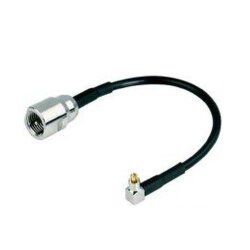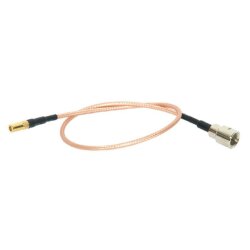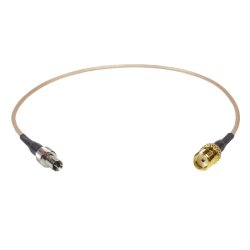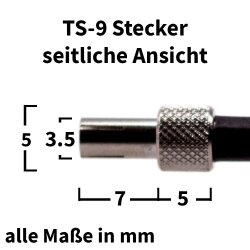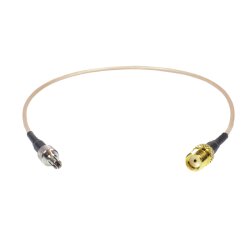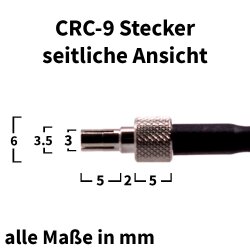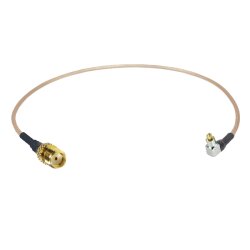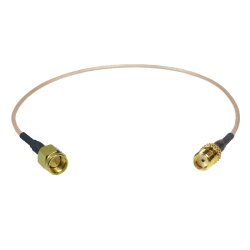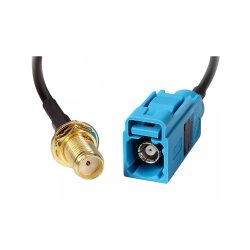Coaxial Pigtails
Pigtails are short and flexible adapter cables. Some manufacturers use special connector types for their products. To get these special connector types into a standard format, you can use a pigtail.
"Pigtails" refer to small connection cables with a configured connector attachment, commonly used as adapters when the components to be connected use different connector systems. This can occur, for example, with devices from different manufacturers or product lines, or due to different connector requirements based on device specifications. When it is necessary to connect them nonetheless, a Pigtail is employed. In the realm of WiFi, where high-frequency cables, known as coaxial cables, are typically used, the Pigtail includes a coaxial cable in addition to its connectors, and is then referred to as a Coaxial Pigtail. Pigtails are relatively short, typically ranging from 20 to 30 centimeters. The name "Pigtail" is derived from its length, not its shape.
Structure of a Coaxial Pigtail:
The central part of the Pigtail is a coaxial cable, consisting of an inner conductor (e.g., copper wire), a dielectric (non-conductive material), one to two shields (e.g., foil or braid), and an insulating outer sheath. Additionally, silver plating is often used to counteract the so-called skin effect, responsible for unwanted damping. The quality features of a coaxial cable include thickness, frequency response, and damping. In general, thicker cables experience less damping. However, thinner cables are preferred for practical reasons as they are easier to install and bend. A cable is considered higher quality when it exhibits minimal damping with minimal thickness. Coaxial cables usually have an impedance of 50 ohms, striking a balance between optimal resistances for maximum power and voltage as well as minimal damping, which would be 30 and 70 ohms, respectively.
Furthermore, the Pigtail consists of two connectors: a standard one (in the form of a pin) and a reverse one (in the form of a socket). Depending on the intended use, the two connectors can belong to either the same or different connector systems. One of the most commonly used connector systems is SMA (subminiature A), a microwave connector known for its robustness and frequent usage. MMCX (micro miniature coaxial connector) is also widespread, featuring a snap-on locking mechanism that allows connector rotations of up to 360°. Developed in 1990, it is the smaller version of the MCX connector and supports frequency ranges up to 6 GHz. It is commonly used in PC cards and small high-frequency components. U.FL connectors are also frequently used when connecting antennas to circuit boards or other small assemblies.
In our online shop, you will find numerous pre-configured connector combinations. Upon request, we can also assemble a custom coaxial Pigtail for you. Feel free to reach out to us or use our convenient configurator if you have any questions.
Application of Coaxial Pigtails:
For those seeking a strong WiFi signal, it is sometimes necessary to mount an external WiFi antenna to achieve the desired range. This antenna is then placed in an ideally suitable location and connected to the router via an antenna cable. Ideally, one would place the router directly at this location, but this is rarely possible since the router is usually bound to a location, such as through the telephone socket, and can only be moved to a limited extent. As both the antenna and the router have small cable connectors, the use of a thin cable is evident. However, high losses due to damping are expected with thin cables. As mentioned earlier, with coaxial cables, thinner cables result in higher damping and, consequently, signal loss. Even at a length of two meters, the signal loss can be as high as 40%! For those still wishing to work with a coaxial cable, it is crucial to use a thicker cable with a thicker inner conductor. While this cannot be directly connected to the components, it is not an issue with a coaxial Pigtail acting as an adapter. Although this solution is slightly more expensive than using a conventional thin coaxial cable, the effort is worthwhile since significant damping would negate any gains from the external WiFi antenna. Alternatively, for those aiming to increase range, it is possible to work with a WiFi USB stick with a long USB cable or an access point connected to a network cable. Both options bypass the damping issue and keep signal losses minimal.
Accessories for all variants can be found in our online shop. If you have questions about which solution is best for you, we are happy to provide detailed information as part of our customer consultation. Simply give us a call or send an email to info@wlan-shop24.de
